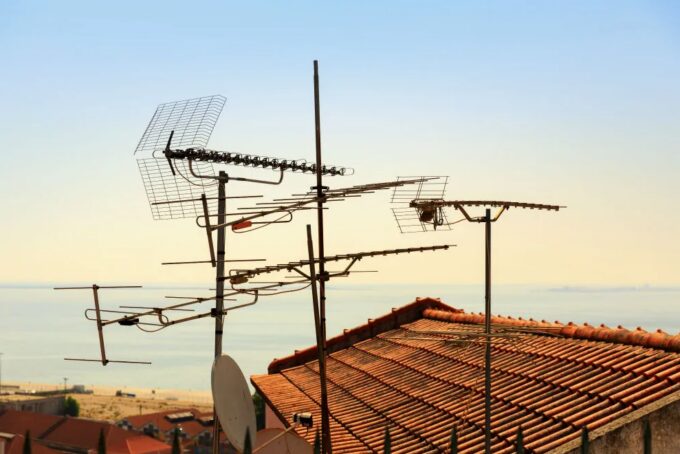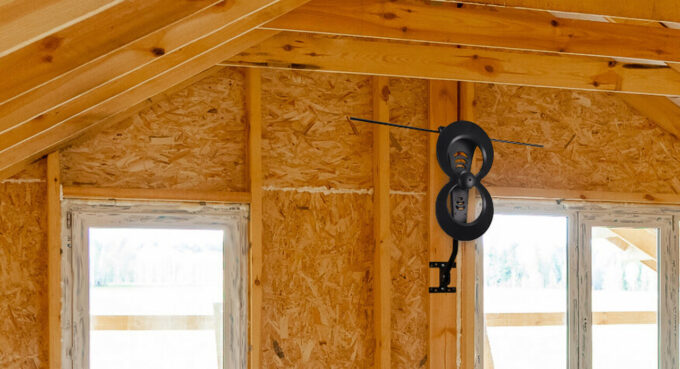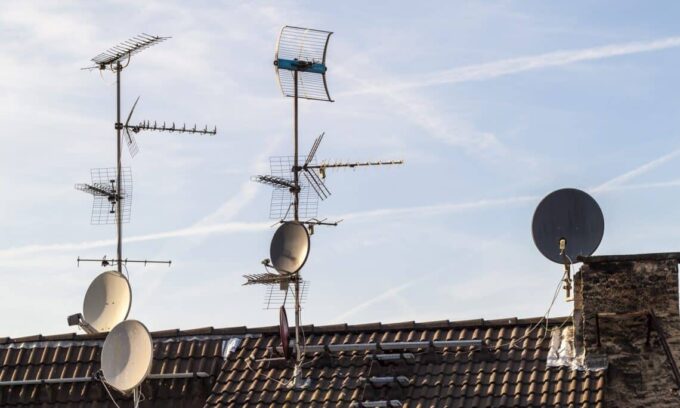It would be wrong to claim that the internet has not tried to take television’s place as the dominant media in charge of both information sharing and the inexhaustible source of entertainment. On the other hand, claiming that the battle for supremacy is over would be equally incorrect. Moreover, we should emphasize that even though seemingly in quarrel, both the internet and television try to find means to coexist. For example, nowadays you might subscribe to various platforms to enjoy various TV programs for a respondent fee. On the other hand, you might opt for an over-the-air approach, and take pleasure in channels of your choice free of charge. To do so, you would need an antenna, and in the following lines, you will find tips for installing it in your attic.
Safety First

Source: longrangesignal.com
No matter what height is in question, we should emphasize that height works imply taking care of security measures first. Therefore, make sure you and potentially someone else helping you have taken necessary safety precautions for your endeavor to pass without potentially unpleasant unexpected situations.
Do not get us wrong, but there are different types of attics, and a vast majority of homeowners forget in what condition they are until they are obliged to visit them. Unfortunately, the overall tidiness level fails to satisfy average safety requirements, thus, make sure you know what you are dealing with before going under your roof unprepared.
Indoor VS Outdoor
Before you make a purchase, you should do your homework and establish which type of antenna would suit your cause best. Namely, different models could meet your wants and needs but bear in mind that the basic difference refers to whether the antenna is designed for outdoor or indoor use.
Basically, the attic area represents a border area between the inside and the outside of a household, thus, depending on a model of your choice, it might be suitable regardless of which type you choose. Still, we advise you to pay attention and establish which solution would be the best for your setting, since we doubt you would enjoy making amends later when it turns out you bought an inappropriate TV receiver.
The Setting

Source: antennasdirect.com
After you acquire the right TV antenna and establish the attic area is approachable, the only logical sequence of events would imply you install the device as soon as possible. Now, the cheapest way to take a venture such as this one out is to do it on your own steam, but it could cost you both your time and nerve, especially if you failed to demonstrate proficiency in the same or similar DIY projects in the past.
Doubtlessly, the safest way is to get in touch with a professional service and reach out for a helping hand of someone you are positive would install the antenna perfectly. Surely, you would have to loosen the bag to cover the installation costs, thus, assess whether the investment would justify the expenditure before making any final decisions. Also, make sure you visit tv-aerials-uk.co.uk if you need additional pieces of information about what professional aerial services should be in charge of delivering.
Polarization
In order to project the content via the TV screen, the antenna needs to be fit to receive the signal sent by the transmitter. Furthermore, you must align it in the direction of the most appropriate signal source.
Now, even though the logic dictates that the closest transmitter should be the most suitable place to point your antenna to, the catch is that other factors also affect the reception. Namely, different physical barriers, natural and artificial, as well as different types of power stations can compromise the quality of the signal reaching a specific location, so make sure you are familiar with feasibility conditions before blaming the device for the poor performance.
When polarization is in question, we should emphasize there are linear, circular, and elliptical types, depending on signal reception. In a nutshell, satellite antennas are characterized by using circular polarization, while linear antenna systems catch not only vertical and horizontal but also slant polarization. Various models are not solely different in properties, but also structure, so you should not experience difficulties with distinguishing peculiar types as long as you know what to focus on.
Protection

Source: architecturelab.net
People decide to install their TV antennas on their attic for several reasons, and protection from various weather conditions is surely at the top of the list. Still, one should be aware that even though it is incomparably better to install the antenna in the attic than in the open, it is still necessary to protect the construction as much as possible.
Namely, a TV antenna should be as firmly fixed as possible, since its positioning can be compromised by strong gusts of wind that attic space is not immune to. Even the slightest wiggle can disturb signal reception and cause additional issues with the picture quality which you would like to avoid at all costs. Thus, do whatever you can to consolidate your antenna setting after you determine the optimal positioning spot in your attic.
Maintenance

Source: lifewire.com
Most frequently, attics are not considered the cleanest corners of a house, especially the ones where one might consider installing their antennas. Still, that does not mean you should not clear the area where you intend on placing the TV aerial. Also, you should be aware that brushing the dust away from your attic antenna cannot do you any harm, moreover, we advise you to attend to it whenever you notice the signal is getting weaker.
Also, check the status of the setting from time to time, since either strong wind or an animal might disrupt its stability. Without question, any random displacement can and will affect the picture you get, thus, making sure everything rests in its place should be the first thing to attend to if you notice particular image quality disturbances.
You should not have any trouble setting your attic antenna after reading through the lines above. Even though it might seem challenging, you should get your TV signal receiver installed in no time, especially if you decide to listen to the tips we have appointed you to. On the other hand, if you reckon hiring a pro service to do the hard work for you is a venture you would more gladly participate in, feel free to loosen your bag.







